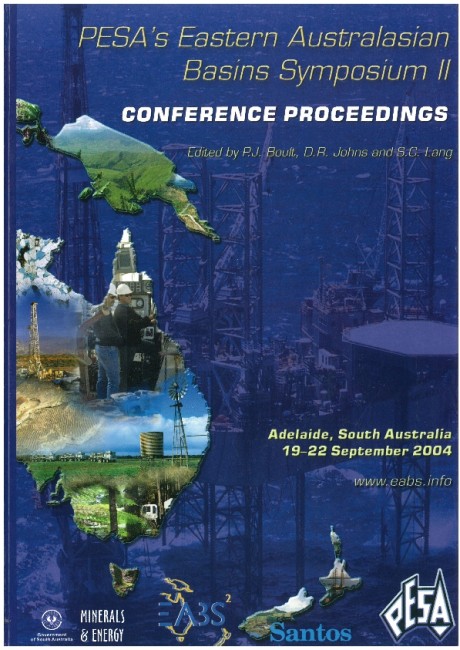Publication Name: PESA's Eastern Australasian Basin Symposium II
Authors: A.M. Cummings, R.R. Hills and P.R. Tingate
Date Published: December 2004
Number of Pages: 34
Reference Type: Book Section
Abstract:
Despite periodic exploration in the Bass Basin since the mid 1960s, a number of questions remain concerning the deeper architecture of the basin, the timing and nature of major structural events and the influence of structural activity on trap formation and breaching. Detailed structural mapping of an extensive 2D seismic grid and the Yolla 3D seismic survey has provided important new insights into the structure and tectonic evolution of the Bass Basin. The Bass Basin is a failed arm of the Southern Rift System that developed as a result of the initial separation of Australia and Antarctica. The basin is underlain by a series ofNW -SE trending half-grabens that have undergone varying amounts of extension relating to three regional tectonic events:1. Tithonian(?)-Barremian Southern Ocean Rifting;
2. Cenomanian-Middle Campanian Tasman Rifting; and
3. Cenomanian-Middle Eocene sinistral shearing of Australia and Antarctica along the Tasman-Antarctic Shear Zone.
Cretaceous rift structures within the Cormorant, Yolla and Pelican Troughs underwent oblique extensional reactivation from the Paleocene to the Middle Eocene. Oblique extension was associated with increased tectonic activity along the Sorell Basin and South Tasman Rise. This 'far-field' reactivation of the Bass Basin controlled the distribution of source, seal and reservoir facies of known hydrocarbon accumulations.
Oligocene-Miocene compressional reactivation within the Bass Basin was dominated by right-lateral wrench
deformation and localised inversion of Cretaceous-Middle Eocene rift structures. Accurate mapping of strike-slip trends within the basin has significant implications for the prediction of vertical hydrocarbon migration and entrapment in the prospective Cape Wickham Sub-basin.


